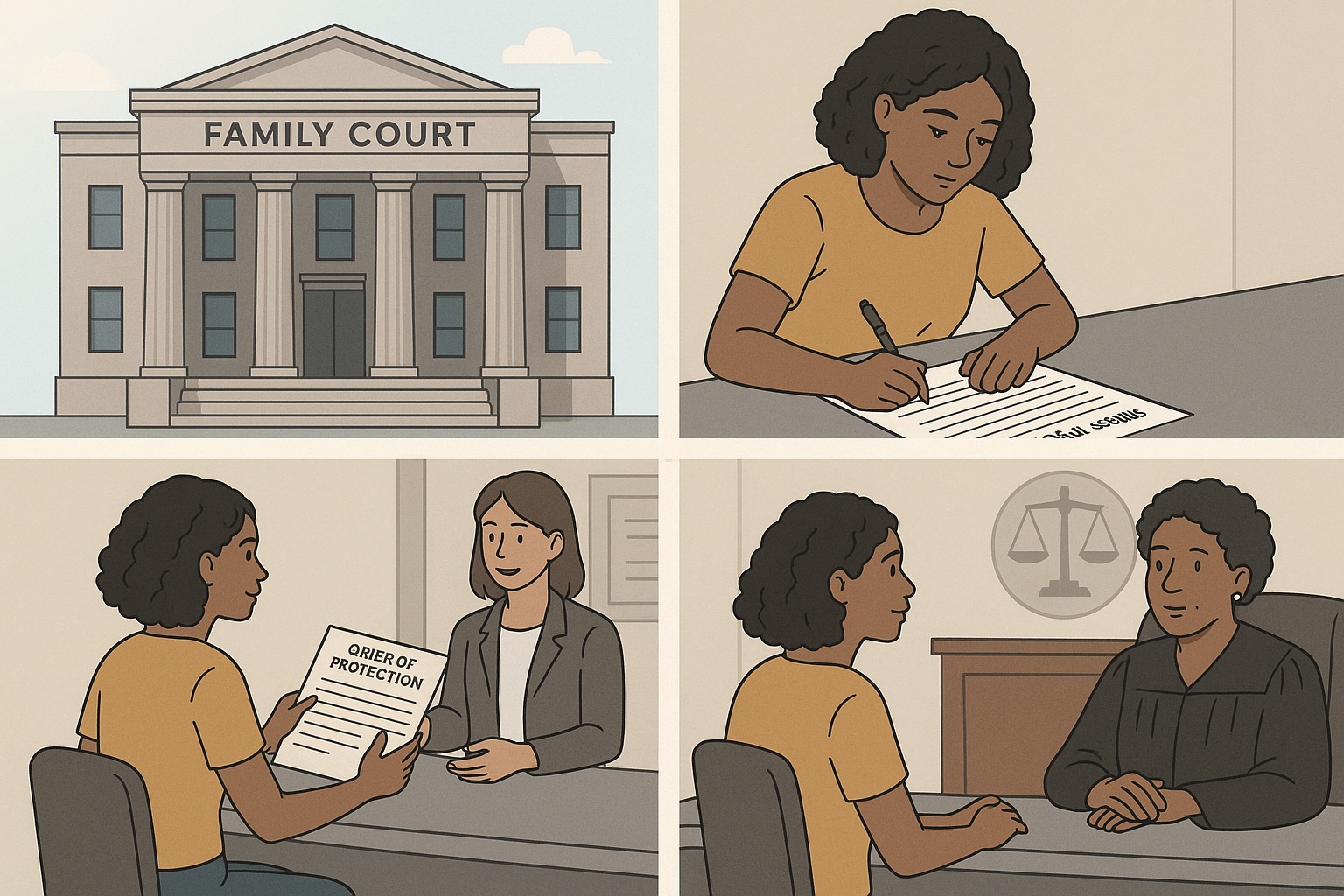Step-by-Step: Filing an Emergency Order of Protection in NYC Family Court in Under 60 Minutes
A step-by-step guide for survivors on how to file for a Temporary Order of Protection (TOP) in NYC Family Court, with a goal of completing the process in under 60 minutes.

When a domestic violence situation escalates, time is of the essence. For survivors in New York City, knowing how to quickly and efficiently obtain legal protection is a critical step toward ensuring safety. While the thought of navigating the legal system can be intimidating, the NYC Family Court has a streamlined process that can help you file for an Emergency Order of Protection, also known as a Temporary Order of Protection (TOP), in a surprisingly short amount of time—often in under 60 minutes.
The Foundation: What is an Emergency Order of Protection?
An Emergency Order of Protection is a court order that provides immediate, temporary legal protection from an abuser. It can order the abuser to stay away from you, your home, your children's schools, and your workplace. A TOP is a critical first step, as it provides this protection until a full hearing can be held to determine if a final, long-term Order of Protection should be issued.
The 60-Minute Game Plan: Your Step-by-Step Guide
This guide outlines the process at the NYC Family Court. While individual circumstances vary, this is a general roadmap for getting an order in place quickly.
Step 1: Get to the Right Place (The Domestic Violence Clerk's Office)
Every borough in New York City has a Family Court. You should go to the Domestic Violence Clerk's Office within the Family Court of the borough where you live or where the abuser lives. These offices are designed for walk-in filings and have staff dedicated to helping survivors.
Step 2: Start the Paperwork (The Family Offense Petition)
You will be asked to fill out a "Family Offense Petition." A court clerk or a domestic violence advocate from a partnering organization will be available to help you.
- Be Factual and Specific: Write down a clear, factual account of the most recent incident of abuse. Include dates, times, and what happened. Avoid emotional language and stick to the facts.
- Be Prepared: Have the abuser's full name, address, and date of birth ready if you know it.
Step 3: Wait to See the Judge
Once your petition is complete, you will be given a temporary court number and will wait to see a judge. The wait time is often the longest part of the process, but the court prioritizes these cases.
Step 4: See the Judge (The In-Person Interview)
When you meet with the judge, they will ask you to briefly describe what happened. This is not a full trial. The judge is trying to determine if there is a legal basis for a TOP. Be prepared to state the facts of the abuse clearly and concisely.
Step 5: Get Your Order & Serve the Abuser
If the judge grants the TOP, they will sign the order. You will be given a copy, and the court will provide instructions on how to have the abuser "served," which is the process of legally notifying them of the order. This is typically done by a third-party process server, not by you. Once served, the order is legally binding.
This streamlined process is a testament to NYC's commitment to protecting survivors. By knowing the steps, you can walk into the Family Court with confidence, ready to secure your safety in a matter of minutes.
[object Object]
1. What is the difference between a TOP and a final Order of Protection?
A Temporary Order of Protection (TOP) provides immediate protection and lasts until your next court date. A final Order of Protection is issued after a hearing and can last for several years.
2. Do I need a lawyer to file for a TOP?
You are not required to have a lawyer for the initial filing. There are domestic violence advocates available at the court to help you. However, a lawyer is highly recommended for the final hearing.
3. What if I don't have evidence with me?
You do not need physical evidence to file a petition. Your sworn testimony is a form of evidence. However, having documentation like photos or text messages can strengthen your case.
4. Can the abuser get a copy of my paperwork?
Yes, the abuser will receive a copy of the petition when they are served with the Order of Protection. It is therefore important to be factual and to avoid including your new address or other sensitive information in the petition itself.
5. What if I don't know the abuser's address?
The court can still issue a TOP. However, it will be more difficult to serve the abuser. A domestic violence advocate can help you explore options for service.
6. What if I get to court after the Domestic Violence Clerk's office closes?
If you are in immediate danger, you can go to the Criminal Court to seek a TOP. However, for a Family Offense Petition, you should go to the Family Court during business hours.
